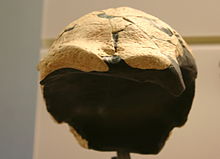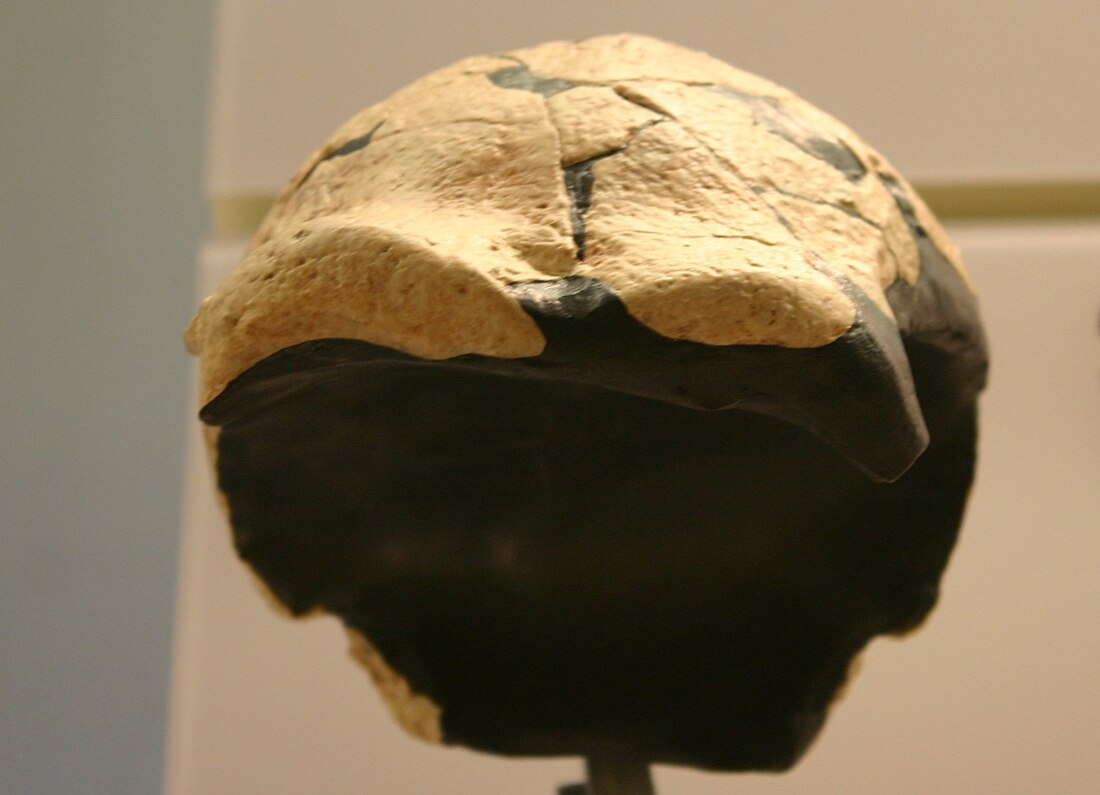Saldanha man
Hominin fossil From Wikipedia, the free encyclopedia
Saldanha man also known as Saldanha cranium or Elandsfontein cranium are fossilized remains of an archaic human. It is one of the key specimens for Homo heidelbergensis. It has not been dated directly, and is estimated to be roughly 0.5 million years old.[1] The remains, which included a fragment of lower jaw, were found on an exposed surface between shifting sand dunes on the farm Elandsfontein, which is located near Hopefield, South Africa.
 Saldanha skull, Smithsonian Natural History Museum | |
| Common name | Saldanha man |
|---|---|
| Species | Homo heidelbergensis |
| Place discovered | Hopefield, Saldanha Bay Local Municipality, South Africa |
| Date discovered | 8 January 1953 |
| Discovered by | Keith Jolly and Ronald Singer |
It was found associated with a variety of fossil vertebrates, and initially classified as Homo saldanensis (Drennan 1955). Singer (1954) noted close resemblance to Kabwe 1 at Broken Hill (Zambia) and LH 18 at Laetoli (Tanzania).[2][a] Comparison with Kabwe 1 specifically, and thus classification as African H. heidelbergensis (H. rhodesiensis) was also regularly supported by later authors.[1]
See also
References
Wikiwand - on
Seamless Wikipedia browsing. On steroids.
